 |
||||||||||||||||||||||||||||||||||
There are 3 types of rules governing the TKG ARENA game: 1. The main rules: These rules describes the different components/concepts making up the game, the procedures in which the game is carried out and how players take actions against each other. 2. The auxiliary rules: These rules are added to the main rules and often supercede or modify the main rules to fit an intention in a detailed manner. This includes placing requirements/constraints at the start of the game or to change the winning condition of the game. 3. The event rules: These rules are usually time or site specific during an event in which the game take place. Event rules are often used to fit themes during tournaments. Official TKG ARENA games are called tournaments and the rules of each tournament is structured around how the auxilliary and event rules are added to the game. |
||||||||||||||||||||||||||||||||||
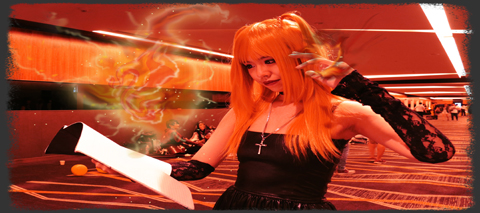 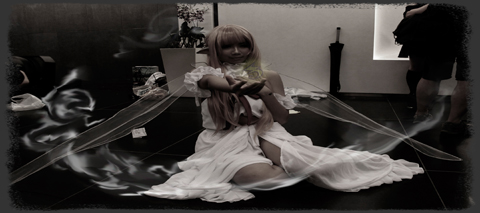 |
||||||||||||||||||||||||||||||||||
|
||||||||||||||||||||||||||||||||||
|
||||||||||||||||||||||||||||||||||
|
||||||||||||||||||||||||||||||||||
|
||||||||||||||||||||||||||||||||||
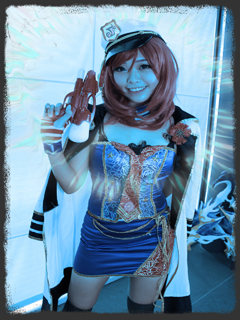 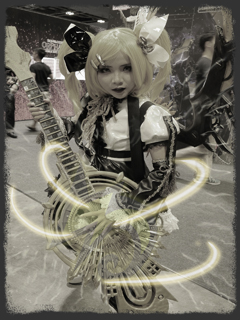 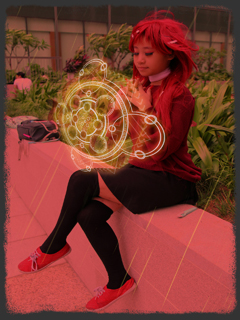 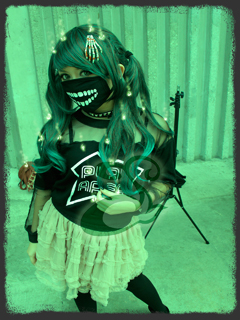 |
||||||||||||||||||||||||||||||||||
|
||||||||||||||||||||||||||||||||||
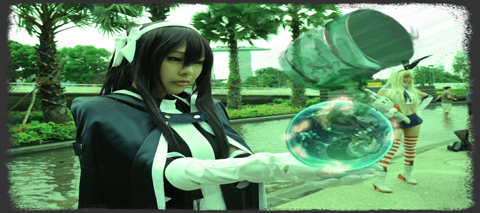 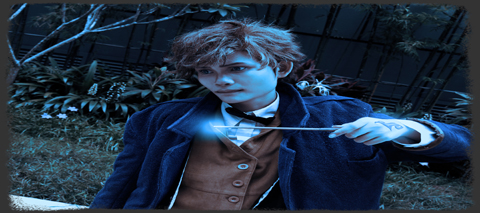 |
||||||||||||||||||||||||||||||||||
The Elemental Kings - Disorder This is an extension to the main game TKG ARENA: The Elemental Kings. Multi-player Scenario The components in the TKG ARENA game can be re-contextualised for multi-player games. Components required for this game: STANDARD DECK (DECK) : 1 |
||||||||||||||||||||||||||||||||||
The Elemental Cycle For more experienced players, the concept of the elemental cycle is introduced into the game. This refers to the different relationships each element has with the others according to their dominance, opposition and weakness. The table below is read as: 1. FIRE (ASHW) dominates over EARTH (OHIF), opposes (equal in power) AIR (UKELELE) and is weak against WATER (ESBNER). 2. WATER (ESBNER) dominates over FIRE (ASHW), opposes (equal in power) EARTH (OHIF) and is weak against AIR (UKELELE). 3. AIR (UKELELE) dominates over WATER (ESBNER), opposes (equal in power) FIRE (ASHW) and is weak against EARTH (OHIF). 4. EARTH (OHIF) dominates over AIR (UKELELE), opposes (equal in power) WATER (ESBNER) and is weak against FIRE (ASHW). |
||||||||||||||||||||||||||||||||||
|
||||||||||||||||||||||||||||||||||
The objective of this game scenario is to be the first to discard all your cards in your CURRENT HAND. The recommended numbers playing the game will be 2,3,4, and 6 who will be distributed with 18,12, 9 and 6 cards respectively from a shuffled STANDARD DECK. Players start the game by each drawing a card from the top of a common shuffled DECK. The player with the highest number starts first and the players get their turns in a clockwise manner. The drawn cards go back to the bottom of the DECK. In case of ties, the tied players draw again till the turns are resolved. The starting player may lay down any 1 card from his/her hand into a common pool in front of all players.. During each turn, each player may EITHER 1) play a card whose FACE VALUE is higher than the previous card; 2) play a card whose ELEMENT dominates the ELEMENT of the previous card; 3) pass and the turn goes to the next player. Each time a player plays a card whose ELEMENT dominates the ELEMENT of the previous card, each player MUST choose a card from his/her CURRENT HAND and pass it to the player on the left. In the situation when the game cannot go on as players can no longer put down cards due to the rules, the player with the least cards of the smallest number wins. |
||||||||||||||||||||||||||||||||||
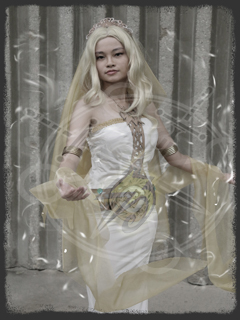 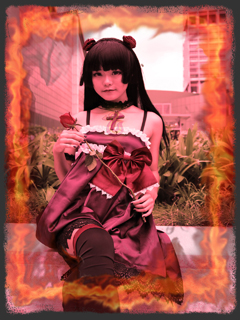   |
||||||||||||||||||||||||||||||||||
Rise of the Magi This is an expansion to the main game TKG ARENA: The Elemental Kings. The Tournament Rules In this expansion, key features of the tournament mode for the TKG ARENA game are introduced so that players may run their own games in tournament mode. A 2-person set up in tournament mode is called a DUEL. Oinks (For Tournament Use) The concept of a magical currency called Oinks is introduced into the game. There are 4 types of Oinks represented by the insignias of the Elemental Kings. Players may use any counters, beads or other small objects to represent them. |
||||||||||||||||||||||||||||||||||
|
||||||||||||||||||||||||||||||||||
The Deck Out In the first rules described in TKG ARENA: The Elemental Kings, when one player runs out of cards during standalone mode, a condition known as a deck-out signals the end of the game. However, players can choose other conditions for the game to end. The default condition for winning in a DUEL is called DEATHMATCH, where the LIFE of one of the players must run out (reaches 0). If their cards from the DECK run out before this happen, players reshuffle their cards from the GRAVE and assesmble a new DECK to draw again. The concept of a deck-out cost means that a cost must be paid for this action to be performed, and if the cost cannot be paid, the player will also lose the game. The default deck-out cost for a DUEL is a total of 4 elemental Oinks: 1 from each element put into the pool. Winner of the DUEL takes all from this pool. |
||||||||||||||||||||||||||||||||||
The Charge Bar The concept of a magical charge bar focusing elemental energy is introduced into the game. During the normal course of the game, cards of different elements are used for attack and defence. After dealing or fending off the damage to the enemy player, these cards are usually discarded into the GRAVE. The CHARGE BAR is a game component that stands between therse "to-be-discarded" cards and the GRAVE. This does not apply to cards which have to be specifically discarded due to other instruction. E.g. Sticky Trap.
Elemental Charge The player can choose to store a single stack of 5 cards belonging to the same element (E.g. 5 ESBNER cards) to obtain an advantage before discarding these stored cards into the GRAVE. ASHW cards:Player may declare and double the damage of the next attack. This is only applicable when the attack is declared BEFORE the defence is made and it is successful. OHIF cards: Player may block off one incoming attack (including special effects). ESBNER cards: Player may restore 5 LIFE independently (at any time). UKELELE cards: Player may have a second attack immediately by discarding and redrawing the CURRENT HAND with up to 5 cards from the DECK.
Value Charge The player can choose to store a series of cards bearing the same FACE VALUE of 4 cards (of differing elements) in the CHARGE BAR to obtain an advantage before discarding the stored cards into the GRAVE. Whenever the enemy player deploys cards bearing the same FACE VALUE from his/her CURRENT HAND during play, the player may remove and keep 1 Oink of his/her choice from the enemy player for each occurence of the FACE VALUE used. E,g. TRIPLETS in this case will result in the loss of 3 Oinks. The player can choose to keep the FACE VALUE cards in the CHARGE BAR to maintain the advantage indefinitely. |
||||||||||||||||||||||||||||||||||
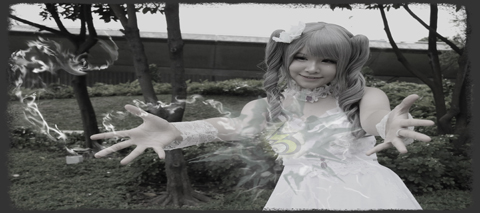 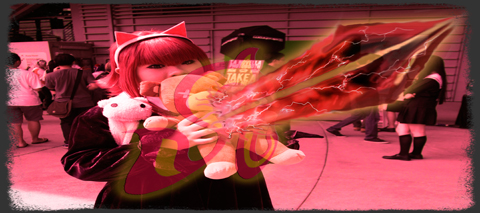 |
||||||||||||||||||||||||||||||||||
Spell Engagement Spells, spell effects and special effects are used interchangeably in referring to the effects of special cards. A STANDARD DECK which has been completely replaced by special cards is known as a FULL SPELL DECK. During an engagement, the defending player must wait for the attackng player to place down his/her ATTACK HAND before responding. Any spell effects from special cards (especially independent special cards) as a defencsive response will only take place after the ATTACK HAND is resolved first. The limit on the number of spell effects used per attack depends on the current LIFE of the player. For a player with 100% LIFE, only 1 spell effect is used and for every other decrease of 20% in LIFE, another spell effect can be used concurrently. That is to say for a player which has only 20% of LIFE remaining, up to 5 spell effects can be used per attack.
Spell Embedment & Sequence The attacking player can choose to embed any spell effect (from special cards) in an ATTACK HAND but it will only take effect if the ATTACK HAND itself is successful. Damage due will still be inflicted. The attacking player can choose to use the spell effect only and the defending player must either use cards with the same ELEMENT and FACE VALUE against it (known as WARDING) when applicable or to use other spell effects to avoid it. E.g. Telegate. Conversely, if a defending player successfully defends against an attack with a special card, the special effect can be embedded within the DEFENCE HAND against the attacking player. The attacking player may avoid this counter with the same mechanism (WARDING or other spell effects) as described above. It is to be noted tha the effects of special cards that affect the CURRENT HAND will not be able to affect the ATTACK HAND. E.g. An Air Dispel put up against Sand Bite will not negate each other but will affect the rest of the cards in each other player's CURRENT HAND respectively. If the defending player wishes to deploy any special card(s) immediately from his/her CURRENT HAND against any declared attack, he/she will not be able to replenish the DEFENCE HAND until the immediate attack is resolved first, followed by the effects of the deployed special cards. In other words, defending players will be left with fewer than 5 cards for defence if they choose to put down any cards first when the attacking players are executing their attack. The defending players may replenish their CURRENT HAND only in response to an ATTACK HAND from the enemy player within the same turn. |
||||||||||||||||||||||||||||||||||
Brethren of Chaos Monster Cards In this expansion, the Elemental Kings are able to summon their own minions to join in the foray. These minions come into play in the form of monster cards assembled as a MONSTER DECK. This set up is called a BATTLE. Each monster card has a LIFE value represented by a number within a HEART symbol and a POWER value represented by a number within a SPIKED symbol. The LIFE value is a measure of the amount of damage the monster can take before it is removed from play. The POWER value is a measure of the amount of damage the monster can inflict to others during play. For a BATTLE, the total LIFE value of all the monsters in the MONSTER DECK cannot exceed the LIFE ofthe player at the start ofthe game. All monsters in play must be removed before damage can be dealt to the player directly unless otherwise stated due to other instruction. In a standalone game, only 1 of each type of monster can be used in the same MONSTER DECK. In a tournament game, the organisers or players may decide on the maximum number of each type of monster used in the same MONSTER DECK. Whenever a monster of the same type is already in play, summoning another monster of the same type into play will cost twice as much as the previous monster summoned of the same type. When two monsters of the same type are already in play, summoning the third monster of the same type will cost 4 times as much. The same principle can be applied to additional monsters and beyond. The default deck-out cost for a BATTLE is a total of 4 elemental Oinks: 1 from each element. |
||||||||||||||||||||||||||||||||||
|
||||||||||||||||||||||||||||||||||
Summoning Cost Each player may select a specific first monster and put it in play without cost from their MONSTER DECK. The second monster at the top of the shuffled MONSTER DECK is then placed face up ready to be summoned. Players may face up and discard any number of yet to be summoned monsters into the SPIRIT STORE or GRAVE during their turn. Ina standallone game, the summoning cost will be the LIFE of the player. Each player can choose to lose a certain number of LIFE equal to the LIFE value ofthe monsters they are summoning into play. In a tournament game, the summoning requires Oinks specific to the element of the monster. E.g. ASHW Oinks are used to summon ASHW monsters. The element of each monster can be identified by their card background as they shared the same card background as their Elemental King. E.g. All ASHW monsters have a flamng orange background identical to that of ASHW. Each player can choose to expend a certain number of Oinks equal to the LIFE value of the monster they are summoning into play. For a BATTLE, each player may deploy a number of Oinks TWICE his/her own LIFE in any combination of the elements. |
||||||||||||||||||||||||||||||||||
|
||||||||||||||||||||||||||||||||||
There are 2 phases happening at the same time during each turn. The attack phase of one player is the defence phase of the other player simultaneously. monsters can only be summoned during the attack phase. In other words, players cannot summon monsters from the MONSTER DECK during the defence phase. Removing Monsters Each monster can be removed by a special effect or by inflicting enough damage that is equal or higher than its LIFE. E.g. A successful SOLO attack hand can remove a monster with 1 LIFE but not 2 LIFE. A monster with POWER 2 will not be able to hurt a monster with 3 LIFE even with a successful attack. Monsters Attacking Monsters can attack by sharing the ATTACK HAND of the player. It is important to note that the damage inflicted by the monster is its POWER rather than the damage value of the ATTACK HAND. E.g. A SOLO attack by a monster of POWER 5 inflicts 5 damage to its target if it is successful. After its attack, the monster cannot attack again in the same turn. Monsters Defending Monsters can be defended by sharing the DEFENCE HAND of the player. Note that the DEFENCE HAND of the player can be replenished from the DECK after each defence. Tapped monsters sustaining special effects due to their special abilities can still be defended. The defence procedure for monsters is the same as that for the player. |
||||||||||||||||||||||||||||||||||
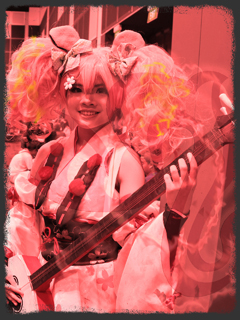 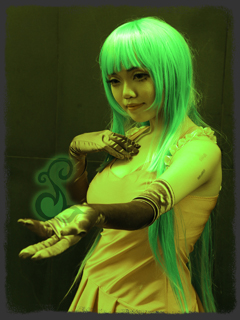 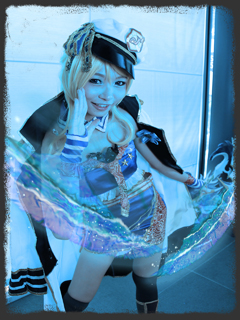 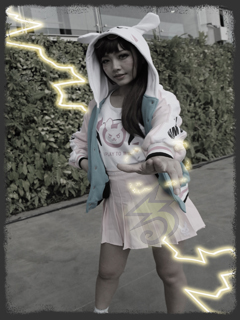 |
||||||||||||||||||||||||||||||||||
|
||||||||||||||||||||||||||||||||||
Monsters' Special Abilities Each monster comes with its own special ability. Special abilities can be activated depending on the phase. Attach abilities cannot be used during defence phases and vice versa. The player must immediately pay the cost associated with the activation of the special ability when used. Monsters activating their special ability are regarded as having spent an action and may not attack again in the same turn. However, if their special ability is part of one single attack, the effects of the ability can be embedded as part of the attack. Independent Special Abilities The keyword here is "Independent Ability". Monsters with independent abilites can choose to use their special powers at any time. Defending Special Abilities The keyword here is "Defence Ability". Monsters with defence abilites can only use their special powers during the defence phase. Attacking Special Abilities The keyword here is "Attack Ability". Monsters with attack abilites can only use their special powers during the attack phase. |
||||||||||||||||||||||||||||||||||
Monsters' Positions Each monster in play must be placed in one of the 9 positions in a 3 x 3 grid in front of the player. The 3 square furthest from the player form the front of the formation. These positions are called MONSTER FRONT(s). In these positions, the monster may attack and can be attacked by other enemy monsters or the enemy player. They may use their special abilities. The 3 square sandwiched in the mddle of the 3 x 3 grid form the back of the formation. These postions are called MONSTER BACK(s). In these positions, the monster may neither attack nor be attacked through the normal attack and defend procedures by comparing values in ATTACK HANDS until the monster in front of them is removed. They can still be attacked by the special effects from the enemy monsters or the enemy player. They may still use their special abilities (to attack others). The 3 square nearest to the player form the store of the formation. These positions are called MONSTER STORE(s). In these positions, the monster may neither attack nor use their special powers. They cannot be attacked until the monster in front of them is removed. They can still be attacked by the special effects from enemy monsters or the enemy player. They are however still considered to be monsters in play and may be sacrificed to fulfill other specific costs as instructed. |
||||||||||||||||||||||||||||||||||
|
||||||||||||||||||||||||||||||||||
During the progress of the turn, players can summon a monster into a position but cannot move or swap monsters in different positions. Players can rearrange their monsters into different positions only at the end of the each turn. On the other hand, whenever a monster is removed, the player may move the monster (if any) that is immediately behind the removed monster to a front position (and similarly so for monsters from store to back positions) during the progress of the turn. The player can choose to not move the monster but monsters in back or store positions with no monsters in front of them can be attacked normally and removed by inflicting enough damage that is higher that its LIFE. |
||||||||||||||||||||||||||||||||||
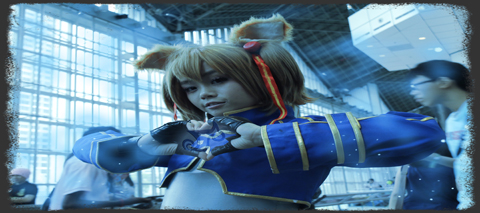  |
||||||||||||||||||||||||||||||||||
The Spirit Meter The concept of a spiritual meter tapping on the spiritual energy of slain monsters is introduced into the game. During the normal course of the game, monster cards are removed from play during the onslaught. Unless the monster is specifically sent to the GRAVE due to other instruction, it may be sent to the SPIRIT STORE of the SPIRIT METER instead. Like the CHARGE BAR, the SPIRIT METER is a game component that stands between these "to-be-discarded" monster cards and the GRAVE. The SPIRIT METER consists of 3 zones. The general idea is to move monster spirits (in the form of monster cards removed from play) through different zones and to reap benefits accordingly. Unlike the CHARGE BAR, the SPIRIT METER may store and process monster cards belonging to diferent elements at the same time rather than one element at a time. |
||||||||||||||||||||||||||||||||||
The Spirit Store This is Level 1 of the SPIRIT METER. Each removed monster from play in this zone may move up to SPIRIT BLAST (Level 2 of the SPIRIT METER) when the player discards an unused card (which is not part of any ATTACK or DEFENCE HAND) from the CURRENT HAND directly into GRAVE. This excludes cards that are sent directly to the GRAVE due to spell effects, special abilities or rules. There must be NO monster card in the SPIRIT STORE in order for monster cards in the SPIRIT BLAST (Level 2 of the SPIRIT METER) to move up to the SPIRIT CYCLE (Level 3 of the SPIRIT METER). The Spirit Blast This is Level 2 of the SPIRIT METER. Each removed monster from play in this zone may move up to th SPIRIT CYCLE (Level 3 of the SPIRIT METER) when the player discards 2 unused cards (which is not part of any ATTACK or DEFENCE HAND) from the CURRENT HAND directly into GRAVE. This excludes cards that are sent directly to the GRAVE due to spell effects, special abilities or rules. Additionally, the player may choose to use 4 monster cards of different elements (one of each from ASHW, ESBNER, UKELELE and OHIF) to deliver a SPIRIT BLAST that will force the enemy player to discard an elemental Oink of the player's choice. Monster cards used this way exit the SPIRIT METER and go to the GRAVE. The Spirit Cycle This is Level 3 of the SPIRIT METER. Each removed monster from play in this zone may be used in place of an elemental Oink (e.g. for summoning other monsters) according to its own element type. E.g. ASHW monsters are used as ASHW Oinks. Monster cards used this way do not go to the GRAVE but is channeled back to the SPIRIT STORE of the SPIRIT METER. |
||||||||||||||||||||||||||||||||||
|
||||||||||||||||||||||||||||||||||
Monsters Engagement Monsters abilities can be used autonomously. They do not have to attack or defend successfully in order to activate their special abilities. The activation of the monster's special ability depends on whether it is activated in the correct phase and the player paying its associated cost. |
||||||||||||||||||||||||||||||||||
Assuming Values Monsters that have the special ability to assume values in ATTACK or DEFENCE HAND may upgrade the level of the HAND. There must be at least 1 card that is used from the player's current hand to form the attack hand. The player cannot form an attack hand purely based on assumed values from monsters' special abilities. The other characteristics of the original ATTACK or DEFENCE HAND remain unchanged. E.g. A SOLO attack using ASHW 8 is combined with the special ability of the monster Armored Feather to become a TWINS 8 attack, a DEFENCE HAND of TWINS is required from the defending player to neutralise this attack. However, if the defending player applies a Protection vs. Fire spell, it is effective because ASHW 8 consists of ASHW cards only. |
||||||||||||||||||||||||||||||||||
Towards the Formation of Hands Monsters that have the special ability to store cards from the CURRENT HAND towards the formation of ATTACK HANDS may park cards under themselves for this purpose. Only 1 ATTACK HAND can be generated at any time. The player must ensure that it is possible to generate the intended ATTACK HAND from the cards parked otherwise all cards parked will go to GRAVE. Cards cannot be withdrawn or used for other purposes till the intended ATTACK HAND is formed and used. However, the player can discard all parked cards at any point of time to form a new intended ATTACK HAND. ATTACK HANDS formed this way can be activated during any attack phase for the player as an additional ATTACK HAND on top of any other that may come from the player's CURRENT HAND at that point. These formed hands may be used for a DEFENCE HAND when formed but cards can only be parked during the attack phase. |
||||||||||||||||||||||||||||||||||
Cease Attack to Tap Monsters that have the special ability to cease attack to tap special cards for their ability must forego their attack during the attack phase. However, they can still be defended. If the monster is used to attack, the effects of the special ability will cease unti it is re-activated. If a specific special card is used as an associated cost, it must be parked under the monster card and not used for other purposes. |
||||||||||||||||||||||||||||||||||
Specific Summoning Monsters that have the special ability to summon specific monsters allow the player to look through his/her MONSTER DECK and put the specific monster into play. The MONSTER DECK must then be reshuffled before play re-commences. |
||||||||||||||||||||||||||||||||||
Direct Attack Monsters that have the special ability to attack directly or enable others to do the same may bypass the need to remove monsters or other protective obstacles in front of the target. However, any overall protective spell effects are still applicable against the attack. E.g. the protective ability of Banana Knuckles boosted by the Protection vs. Fire spell will still negate any ATTACK HAND containing any ASHW card. |
||||||||||||||||||||||||||||||||||
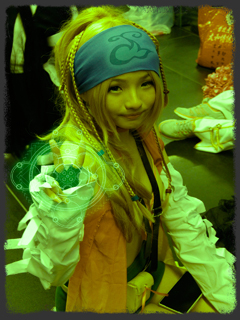 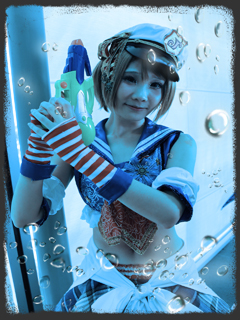 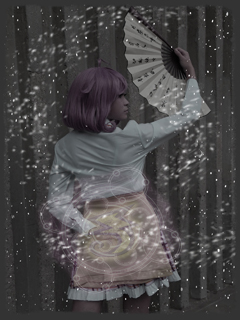 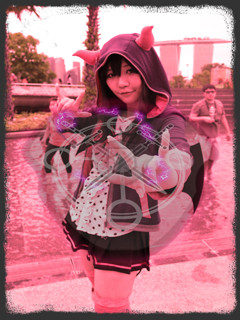 |
||||||||||||||||||||||||||||||||||
|
||||||||||||||||||||||||||||||||||
|
Golden Rule When the rules stated in the cards conflict with the standard rules, the rules stated in the cards take precedence. Regular updates and amendments to rules are available at www.tkgcc.com Any queries can be directed to admin@tkgcc.com |
||||||||||||||||||||||||||||||||||
.jpg)
.jpg)
.jpg)
.jpg)